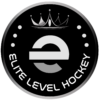Ask The Mind Coach is dedicated to the “mental” part of hockey from both player and parent perspectives. Shawnee Harle takes your questions and provides feedback based on her experiences and training. If you have a question to Ask The Mind Coach, email us!
QUESTION: “My hockey player is very good at skating and stickhandling. To me, she always stands out during practice when they are doing drills. However, as soon as she gets into a game, all of her confidence is gone and she shoots the puck away almost as soon as she touches it. Her coaches have talked to her but nothing has changed. Is this common?”
THE MIND COACH: Yes this is common. It’s a fear-based behaviour and fear is very common in sport. We avoid things we are afraid of and my guess is, your daughter is afraid of messing up, turning the puck over, looking bad, etc., and the way she avoids it, is to get rid of the puck ASAP.
In other words, she plays it safe to avoid mistakes.
Remember, we don’t change behaviour by addressing the behaviour. Behaviour only changes when we get clarity on what’s driving the behaviour.
My guess it, the underlying fear your daughter tries to avoid is FOPO; Fear Of People’s Opinions. She plays it safe to avoid mistakes because she believes mistakes will result in disapproval from her coaches, teammates, parents, opponents and on social media.
The irony is, unless we are making mistakes, we aren’t growing, stretching or learning. See if you can help your daughter see that mistakes are completely normal. Even professional players make mistakes all the time.
Can you help daughter focus on the process rather than the outcome? Mistakes are an outcome and they are completely out of our control. If they were in our control, we would never make mistakes!
Can you help your daughter identify two things she can do with the puck that are in her control (process)?
Her attention needs to be on what she CAN do. Get her to set a goal of doing 1 thing/shift, that’s in her control when she has the puck. If you are watching, track these things so she can see if she’s improving.
Focus on 1-2 things and after that, the chips fall where they may. Sport is a gamble; the outcome is always out of our control.

Shawnee is a two-time Olympian with 26 years of elite coaching and leadership experience. Shawnee holds a Master’s Degree in Coaching Studies, and she is a Master Coach Developer and Master Learning Facilitator for the National Coaching Certification Program, where she trains and mentors both advanced and novice coaches from all sports. Learn more at shawneeharle.com
MORE FROM THE MIND COACH …
The post How Can I Help My Player’s Confidence? appeared first on Elite Level Hockey.






